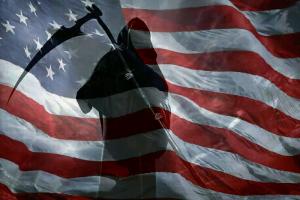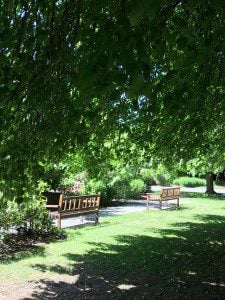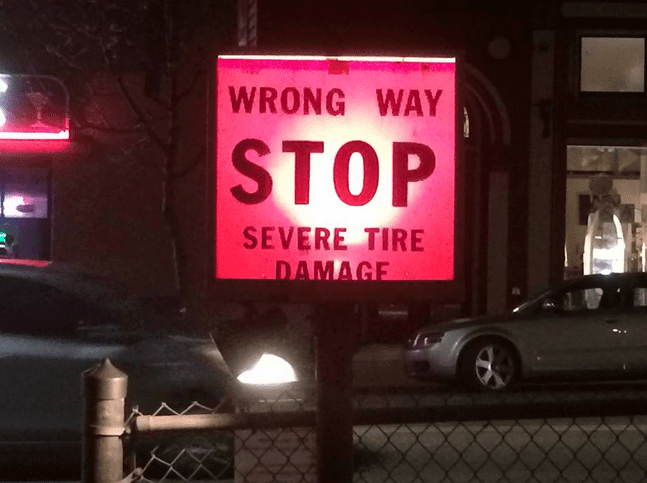As I gaze on with admiration as my friend Joanna Brookes becomes Mormonism’s media darling in the US I’m both thrilled and excited about this moment in our religious history. Joanna’s love of a faith that we share, combined with her take no prisoners honesty about its complexities, inconsistencies and fractures is a rare compound that is deeply missing in the alchemy of our religious conversations. Her freshness, her openness and her willingness to hold meaningful, non-evangelizing discussions with the national media, as has been recently noted by Matthew Nokleby, has probably done more for Mormonism than the millions of dollars budgeted for PR by the Corporation of the President – and she hasn’t picked up a cent for it from the COB. What is happily more, Joanna hasn’t been censured, there have been no threats of excommuncation, and she remains a faithfully serving Sunday School teacher in her San Diego Ward. All of this at the same time as she raises gay marriage placards at gay pride parades, and organizes feminist collaborations. She has her detractors who claim that Mormonism is not big enough to accomodate a left leaning, gay ally, working mother, married outside the temple to a Jew, unorthodox, feminist, pioneer bonnet sewing, intellectual, but they are I fear, a bastion of fearful Amerimormons who are too tightly clenched about their religion for it to become an inviting, vibrant and relevant faith community. Without a significant cultural shift Mormonism will become clannish, flat, punitive and unengaging. As Dan Wotherspoon reminded me on a recent Mormon Matters Podcast, the church is growing into a thousand gardens.
In the US, spearheaded by important thinky, writty, bloggy types who refuse to be afraid of the fraternity, Mormonism is unraveling beautifully from its chrysalis of immaturity into a religion that might just be coming of age in the same way that we come of age in our marriages when we can still love our spouses even though they occasionally back up their arses and fart on our thighs in bed. What people like Joanna and John Dehlin have done is show that there are more conversations than one to be had about our religion. That the frankly unhinged notion that Mormonism is, must, or should be intertwined with a conservative political agenda, is fallacious and ridiculous. They have shown that Mormons can be both Republicans and Democrats, they can be black, brown and white, they can be gay, bi and straight, in, out or balancing on a precipice between, orthodox, progressive and independent, thinkers and doers, stage 3 and stage 4, answerers and questioners. They understand that Mormonism can and must be 50 shades (excuse the grubby pun) for it to be truly beautiful. And thus far, aside from dodging a few misfired bullets, the ecclesiastical reins have been unloosed from the pommel.
But how will all of this shake down at the periphery? What hope do we have out here, where Jon Stewart’s ‘The Daily Show’ is buried somewhere on expensive cable? Where the Mosto community is about 5 strong and where I’m the only New Zealand Mormon I know who blogs about this stuff? In our ward, a couple of weeks ago, a combined meeting was lead by the bishopric who wanted to take the pulse of the people. We were asked if we have any major issues about the church and it was clear that it was a case of ‘anything goes’. The first registered complaint was the lack of lighting in the car park.
We have a way to go in New Zealand to arrive at a place that feels like a Mormonism that thrives in this space rather than behaving like something that is borrowed from America. My good friend Mere and I were chatting about Mormonism in New Zealand just last week. She isn’t a member of the church but for better or for worse (worse as it so happens) she married a less active member from strong Mormon family up North. As a strong, extraordinarily well educated, feminist, Māori woman, Mormonism in a New Zealand context baffles her. She sent her eldest to Church College of New Zealand, a recently closed Mormon school in Hamilton. CCNZ was American Mormonism in Māori drag. Even though most of the students and many of the teachers at the school were Māori, the language wasn’t used, there were no attempts at intercultural practice, no conversations about the racial politics that characterize and continue to constitute our identities, and very few pedagogical resources that would help their students navigate the treacherous terrain as an indigenous person in a colonial outpost. What they offered was a glitzy road show with good-looking Māori kids and a spot on Kapa Haka show that would wow the socks of any passing Pākeha. This lack of effort to hit the cultural sweet spot saw a noticeable cohort of CCNZ students take their cue from these misplaced cultural appropriations and behave like American Māori in Mormon drag. Even the Board of Trustees – who are set the managerial agenda and culture for schools in New Zealand – remained the Quorum of the Twelve until its end. There is nothing like cultural alienation, to create cracks and fissures big enough to drive a reckless train through. As a non-member Mere was appalled by the outrageous sexual impropriety among too many students (but not all), the bullying and the blatant nepotism (notwithstanding its clean cut image) that riddled CCNZ and was relieved when she transferred her lad to an Anglican boys school.
On the one hand in New Zealand, we seem (anecdotally at least) to produce a good number of Māori university graduates, but on the other hand this new Māori Mormon middle-class struggles to find a place for their language activism, for the kinds of social justice issues that the Anglican church continue to promulgate, or for a political orientation that seeks redress for the violence of a white colonial incursion. Many of us middle-class Māori Mormons look comparatively good in the census but we have had to be silent in sacred spaces about our deep and abiding interest in both our language, our culture and our politics. Our language doesn’t feel tolerated in church meetings – even though its continued use might just bring it back from the verge of extinction, our protocols are over-looked as we find ourselves subject to white corporate colonial processes in our religious services, and in living memory there has been no talk in a sacrament service that I have attended about the Treaty of Waitangi and its importance in the formation of our bicultural nation. Even as Americans sing their national anthem with hand on heart, and speak tearfully of their nation’s genesis on July 4th (which seems to miss the indigenous beat somehow), out here we are hushed by a fabric of feeling that tells us ‘no, that’s inappropriate because it doesn’t happen in America’. Here at the periphery we continue to allow the church to be American and we cringe away from the possibility that the church could be truly present here if we would just own up to it as a theology dressed up with its American cultural accessories, a foreign egg in our nest with a good yolk but an unusual number of stars on the shell, another colonizing venture that seems to require us to leave part of ourselves behind at the door. But it doesn’t have to be this way. There are currently no laws or rules, nor are their edicts from HQ preventing us from domesticating our faith tradition and making it relevant in our own non-American places – this is a new time with new opportunities.
I would like to encourage all of us at the periphery who are asked to shed something of our cultural selves each time we venture into our chapels – take your whole selves into your sacred spaces and see what happens. Yes, we share some of the complexities that face the church in the US which makes what Joanna Brookes is doing significant and important for us all, but out here we also have some of our cultural work to do, we have our own tensions, our own struggles, and our own Mormon trail to traverse to bring not only our religion but also ourselves out of cultural obscurity. This might mean pulling pins out of grenades, and having bigger conversations than our weekly correlated materials facilitate. But if we want to grow up as Mormons in this place rather than simpering second-class cousins to the USA it’s a conversation that we urgently need to have.
And by the way, no bishop, Stake President, General Authority or other has the legal right to instruct us not to use te reo Māori in our services. It’s an official language here and its a human right’s violation to prevent it. This isn’t the USA.
Na, reira e te iwi Māori, e te iwi Mormona, me kōrero ngātahi tātou i tō tātou nei reo, ko te kai a te rangatira!!











